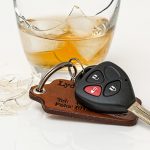Drivers Face Fines for ‘Normal’ Passenger Behaviour

It’s a law you may not know about, but certainly one worth brushing up on.
You’re on a long drive and your front seat passenger is relaxing watching a YouTube clip or a movie on a tablet or smart phone. Seems harmless enough, right?
Actually, as a driver, you can be given three demerit points and fined $337.00.
The law
This rule is contained in regulation 299 of the Road Rules 2014 (NSW) which states that:
(1) A driver must not drive a vehicle that has a television receiver or visual display unit in or on the vehicle operating while the vehicle is moving, or is stationary but not parked, if any part of the image on the screen:
- is visible to the driver from the normal driving position, or
- likely to distract another driver.
If you decide to challenge the case in court, the maximum penalty is 20 penalty units, which is equivalent to $2,200.
The regulation goes on to state that the rule does not apply if:
- the driver is driving a bus and the visual display unit is, or displays, a destination sign or other bus sign, or
- the visual display unit is used as a driver’s aid and either is an integrated part of the vehicle design, or is secured in a mounting affixed to the vehicle while being used,
- the visual display unit is a mobile data terminal fitted to a police vehicle or an emergency vehicle, or
- the driver or vehicle is exempt under another law.
The rule states that a driver’s aid includes:
- Closed-circuit television security cameras,
- Dispatch systems,
- Navigational or intelligent highway and vehicle system equipment.
- Rearview screens,
- Ticket-issuing machines, and
- Vehicle monitoring devices.
It also states that a visual display unit is properly secured only if:
- the mounting is commercially designed and manufactured for that purpose, and
- the unit is secured in the mounting, and the mounting is affixed to the vehicle, in the manner intended by the manufacturer.
Drivers fined
It has been reported that a number of NSW drivers have been fined in recent weeks, including one for allowing a passenger to use a laptop and another for permitting the use of FaceTime.
The drivers have taken to Facebook to warn others about the rule.
Another law: Passenger seat reclining
Another law most of us may have broken at one time or another is letting a passenger recline the seat to have a nap.
Well actually, it’s not expressly against the law to do this – although it is an offence for a passenger not to have their seatbelt properly secured, which may occur if they have their seat all the way down.
The law
The rule is contained in regulation 265(2) of the Road Rules which states that a passenger over the age of 16 years:
- must occupy a seating position that is fitted with an approved seatbelt, and
- must not occupy the same seating position as another passenger (whether or not the other passenger is exempt from wearing a seatbelt under rule 267), and
- must wear the seatbelt properly adjusted and fastened.
It has been reported that spokesperson from Transport NSW has advised that allowing a passenger to recline may also breach regulation 297(2) of the Road Rules, which states that:
“A driver must not drive a motor vehicle unless the driver has a clear view of the road, and traffic, ahead, behind and to each side of the driver.”
That offence is punishable by three demerit points and a $337 fine – or a maximum penalty of $2,200 if the case goes to court.
However, it’s a little difficulyt to see how a passenger reclining back could do anything other than make the side of the vehicle clearer to the driver rather than obscure it, unless of course the passenger has his or her legs up on the dashboard or waives heir arms around.
Requesting a review
If you have been unfairly issued with a penalty notice, you can request a review on the basis that:
- The notice has been issued in error, or
- There are other reasons why you should not be fined.
To initiate the review, you must make the request by the due date on the penalty notice.
You can do this online at myPenalty, using the penalty or infringement notice number as well as the date of the incident.
You’ll also need to provide some proof of identification, such as your address, date of birth or driver licence number.
Review process
Once your application has been reviewed, you will receive a written response outlining one of three possible outcomes:
- Penalty to stand
The review process has determined that you committed the offence and the penalty stands. You must pay the fine, or you can choose to go to court to fight it.
- Caution
The review process has determined that you committed the offence and the fine was properly issued but you have been issued with a caution instead of the original fine and demerit points.
However, driving offences resulting in a caution will be recorded on your driving history.
- Cancellation
The penalty notice was not issued correctly, does not properly disclose the offence, or was issued by mistake. You won’t have to pay the fine and won’t face any related demerit points.
Going to court
If you disagree the review, you can elect to take the matter court.
If you are going to court for a traffic offence, call or email Sydney Criminal Lawyers anytime to arrange a free first consultation with an experienced, specialist traffic lawyer who will accurately advise you of your options, the best way forward, and fight for the optimal outcome in your specific situation.








